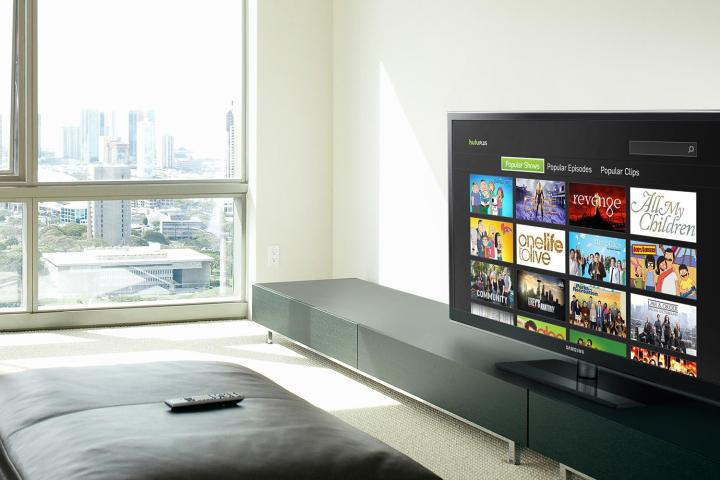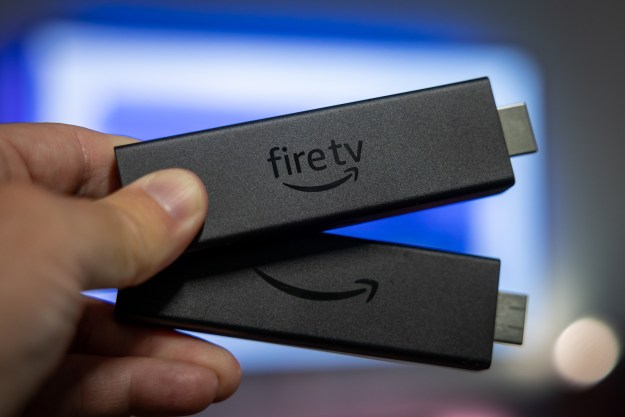
Hulu counts more to networks for one simple reason: Ads.
Thanks to new technologies, there are more legal options for consuming TV than ever, but the people making the shows you love don’t benefit from them all equally. How you choose to watch your favorite shows can dramatically change your value as a viewer, which can definitely affect the fate of the shows themselves. Worried about a show getting cancelled? You’ll want to make your eyeballs count as much possible.
With that in mind, here’s a ranking of the eight most common ways to legally consume a first-run TV show, from least to most empowering.
8. Netflix and Amazon
For shows currently airing on broadcast or cable networks, streaming services are still just secondary outlets, much like syndicated reruns. Can revenue from Netflix and Amazon save a TV show from cancellation? Yes. The Killing returned for a third season on AMC thanks, in part, to a lucrative Netflix deal. Under the Dome and Extant each scored deals with Amazon that I’m sure helped make CBS’s decision to renew those summer shows easier.

It’s more complicated behind the scenes, because networks merely license shows from studios (think Sony, Warner Bros. or Lionsgate) for the exclusive rights to air them. For a Netflix deal to keep a show on the air, the deal has to be so good for the studio, that it can lower the license fee to the network. It’s very indirect. For that reason, subscription services like Netflix and Amazon are currently low on the “power to the viewer” list. Over time, they’ll surely rise in influence. We’re just not there yet.
7. Hulu
Hulu counts more to networks for one simple reason: Ads. Unlike Netflix and Amazon’s subscription revenue, Hulu’s ad revenue does get split with the networks that broadcast the shows, which is why
It’s easy to forget in the current age that TV is still primarily an ad-supported medium. Anytime you see an ad, chances are you’re making someone at the network happy, and networks still hold all the cards when it comes to renewing or cancelling shows.
6. Hulu Plus
The Plus apparently stands for “subscription fee plus commercials.” To the consumer, that can be very annoying, but that also means more revenue to split with the networks and studios.
5. A network’s own website or apps
Though is Hulu is partially owned by three broadcast networks (Fox, NBC, and ABC), it’s still its own separate entity, with its own employees and overhead. I once had a job producing content for NBC.com, but because of NBC’s deal with
4. Watch it on DVR within a week
Industry trades now regularly report Nielsen ratings that include viewers tuning in up to a week after the original air date. Nielsen even keeps track of viewings long past a week, but in my experience, that first week is what matters most in terms of time-shifting. Usually when you see ratings periods longer than that cited, it’s just for marketing purposes. (Pay close attention next time you see an ad for “TV’s number 1 new show!” Different shows often make that claim, each citing a different-sized viewership window.)
3. Watch it via On Demand
On Demand might seem like just another form of time-shifting, no different from DVRing it, but don’t forget – most on-demand services prevent you from fast forwarding through commercials. That gives On Demand an edge over DVRing.
2. Buy or rent episodes online
I could make a case for this going as either #1 or #2. The case for #1 is that when you watch a show on live TV your eyeballs might be worth a few cents, but when you buy (or rent) the show on iTunes, Amazon, or Google Play, your eyes are now worth a buck or two. That’s a huge difference. The case for #2 is, well … I simply can’t think of a show that was on the verge of cancellation, but for its robust iTunes sales.

I’ve asked around, to a variety of friends who work in the industry, and the best they can come up with is The Office, which got a lot of attention for “amazing” iTunes sales despite so-so ratings when it first premiered. But I think NBC’s decision to renew it for a second season had as much – if not more – to do with the fact that the 40 Year-Old Virgin was about to come out. Also: That was a decade ago. I’m sure the direct sale of episodes – either as downloads or DVD/Blu-Ray – factored into the “resurrections” of shows like Community (where Sony worked out a deal with Yahoo), but they certainly didn’t keep the show from being cancelled in the first place.
1. Watch it live
Overnight ratings are still the most important measure to networks and advertisers. If you want your viewership to matter the most, watch your favorite show the night it airs. The Nielsen rating system is far from perfect, but it’s been around for longer than anyone reading this has been alive, and they are bending over backwards to stay relevant (i.e. accurate) in the era of TiVo and Netflix. Watch the show the live and tweet about it. Tell your Facebook friends to watch it. In a weird way, the rise of social media has given a new relevancy to live viewing. No longer is watching a show live something you did when you had no other choice. Now it’s a choice you can make to increase your value as much as possible as a viewer.
Make your vote count!
At the end of the day, the older the method for watching TV, the better it is for networks and advertisers, and the more it’ll help keep what you watch from being cancelled.
You might’ve noticed that I left out one method for TV watching entirely: piracy. I think it goes without saying that when you opt to download a show completely for free, without any commercials, from a source that isn’t being counted or tracked in any official way, you’re completely disempowering yourself as a viewer. No network exec has ever said: “Hey, look how many people are stealing this show! Let’s keep it on the air so we can at least sell some more t-shirts!” When you watch a pirated copy of a show, you’re essentially driving to the polls on Election Day, waiting in line, taking the time to vote… then tossing your ballot in the trash.


